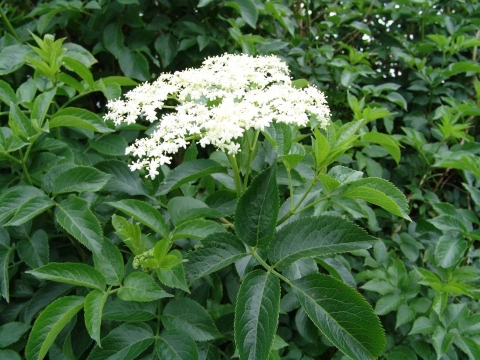Flora
The best time to plant a tree is 20 years ago. The second best time is now. Dambisa Moyo.-
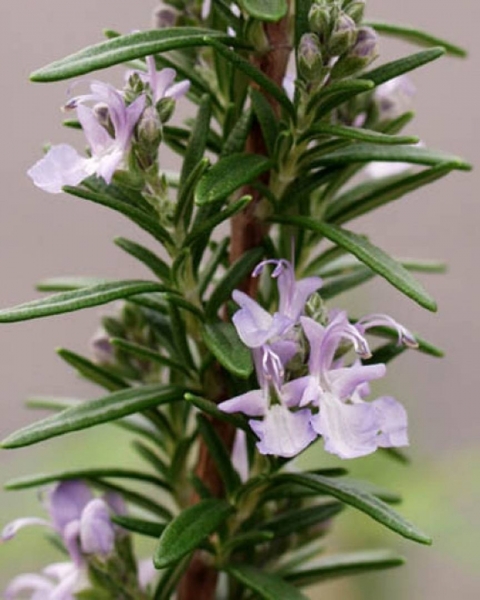
Rosemary
Latin name:
Rosmarinus officinalis
Description:
It is a common shrub in the Mediterranean region, preferably in limestone regions.
Use:
The rosemary is a symbol of fertility and, in the Middle Ages, it was used to purify the room of patients. Being your stimulating odor, Greek students used branches in their hair to alert the memory during exams.
From fresh and sweet flavor, is widely used in cooking, perfectly blended in pork and poultry and roasts.
It has medicinal applications, serving to help treat mild depression, fatigue, headache, migraine, dyspepsia, flatulence, cough, sinusitis, bronchitis, concentration problems, strengthens memory, gastritis and stomach ulcers, arthritis, arthrosis, rheumatism, cystitis, irregular menstruation, menstrual cramps and premenstrual syndrome. -
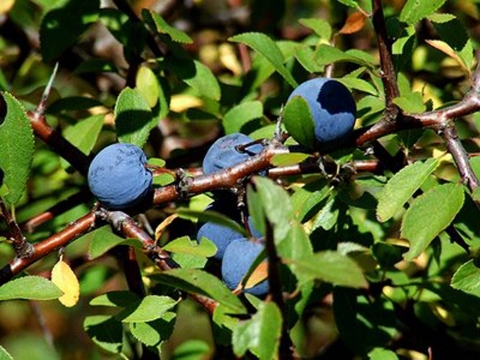
Brava Plum or Blackthorn Bravo
Description:
It is a Portuguese specie with great ecological interest for wildlife: its food serves many species, offering excellent protection of nests from predators and having a protective effect against the wind and soil erosion.
Fruit:
The sloes are edible and resemble a plum, albeit smaller, oval in shape and with a dark blue tint.
Use:
Being a very hard and durable wood it's used for making tool handles, turned objects, sticks and golf clubs.
The flowers, bark and leaves contain hydrocyanic acid and is used in medicine for its astringent properties. -
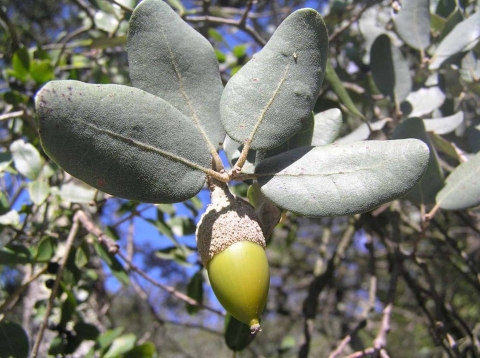
Holm oak
Latin name:
Quercus rotundifolia Lam.
Description:
They are native in the Mediterranean regions of Europe and North Africa
Fruit:
Acorn
Use:
The wood is very hard and resistant to rot and it is widely used in residential construction, boats, barrels for aging wine and manufacturing tools. It is still widely used as domestic fuel in many Iberian regions.
It is one of the few trees that have legal protection in Portugal (Decree-Law No. 169/2001). -
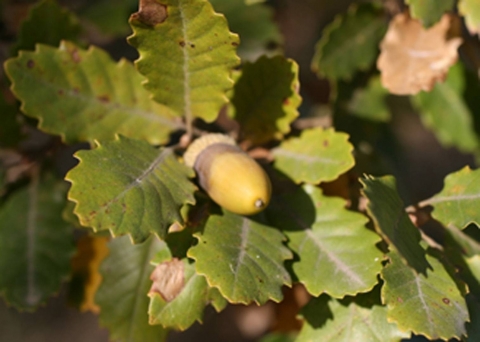
Portuguese oak
Latin name:
Quercus faginea
Description:
They are native in the Mediterranean regions of Europe and North Africa.
Fruits:
Acorns: make connection to the first reference on the acorn
Oak-apple: caused by bites of an insect of the genus CynipsUse:
The wood is very hard and resistant to rot and it is widely used in residential construction, boats, barrels for aging wine and manufacturing tools. It is still widely used as domestic fuel in many Iberian regions.
The oranges are used in the extraction of tannins, which were once extremely popular in the tanning industry, in inks, and as infusion for medicinal purposes as healing or antiseptic.
It is one of the few trees that have legal protection in Portugal (Decree-Law No. 169/2001). -
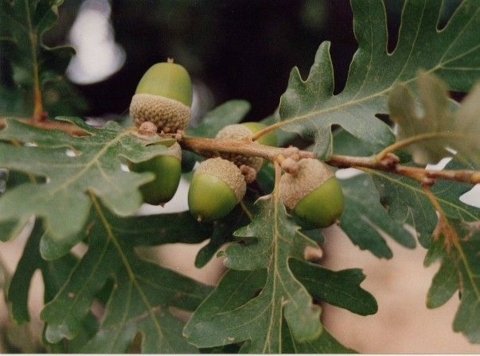
Pyrenean oak
Latin name:
Quercus pyrenaica Willd.
Description:
It is a rare tree in this region, but abundant in the north. Their existence in our woods witness the previous existence of different climatic conditions of today.
Fruit:
The fruit is the acorn, which essentially serves as food for animals. However, it was one of the main foods in the diet of some people as the Lusitanos, getting to be used as a coffee substitute. They also have disinfectant properties and boiled, are popularly used for the treatment of minor infections.
-
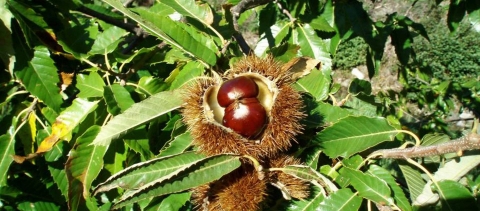
Chestnut
Latin name:
Castanea sativa
Description:
It is a large tree, very abundant in the interior north and central Portugal.
Fruits:
Prickly fruit popularly called hedgehog (similar to the porcupine), which protects the Chestnut (edible part of the fruit)
Use:
The wood is of excellent quality and has been widely used for construction, particularly in the north of the country. It is currently widely used in furniture and interior decoration.
The chestnut is very nutritious and had a major role in supply of various peoples throughout history and it was known as the bread of poor, used as food based on years of poor harvests. It is antiseptic and helps to correct problems of delay in the growth of children, anti-hemorrhagic, combat problems of varicose veins and hemorrhoids, nausea, vomiting and diarrhea.
Take an infusion of chestnut leaves, contracts mucous membranes, inhibiting the violent coughing attacks and it’s recommended for whooping cough, bronchitis and sputum. Contraindications: This tea should not be consumed by diabetics, children under 10 years, pregnant and while breastfeeding. -
.jpg)
Wild mushrooms
Use:
When edible, they are much appreciated for its organoleptic, nutritional and antioxidant properties, providing a good source of protein, carbohydrates, fiber and vitamins.
They are also recognized for its medicinal properties due to the accumulation of bioactive metabolites with anti-inflammatory, anti-diabetic, antimicrobial, antitumor, among others.NOTE:
It is not recommended the consumption of wild mushrooms not previously identified by a specialist. -
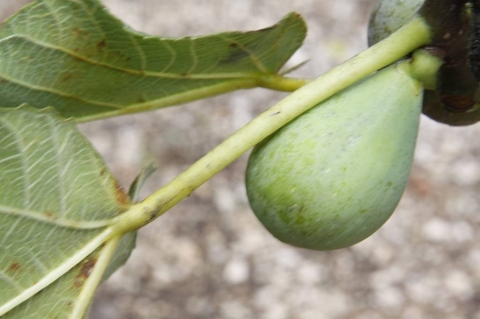
Fig
Latin name:
Ficus carica
Description:
The fig trees are typically Mediterranean trees.
Use:
The fruits are called figs, much appreciated on natural, but it’s also widely used for jams and jellies.
The fig is very rich in important minerals for bone formation and for the proper functioning of the body. This fruit also has a significant amount of vitamin C, combat inflammation in the respiratory system and has a mild laxative action. -
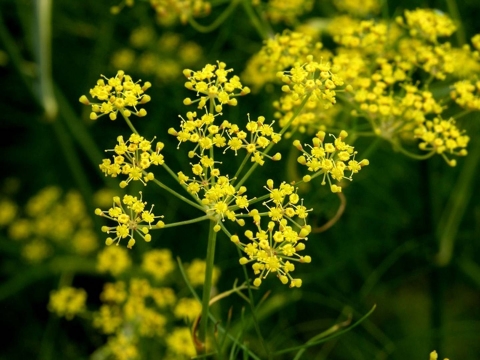
Fennel
Latin name:
Foeniculum vulgare
Description:
It’s a highly aromatic plant that produces seeds known as fennel, also known as rings.
Use:
It is used in cooking, as a flavor of some dishes and production of typical candies of Madeira.
In perfumery, the essential oils are used to scent toothpastes, shampoos and soaps.
The dried seeds are used in tea and herbal teas as well as a flavoring in the manufacture of alcoholic beverages and distilled spirits.
It has anti-inflammatory and stimulant properties, antispasmodic, vermifuge, digestive, diuretic and expectorant, serving to help treat colic, anorexia, bronchitis, vomiting, nodules in the liver or spleen, eye pain, urinary problems, diarrhea and intestinal worms . -
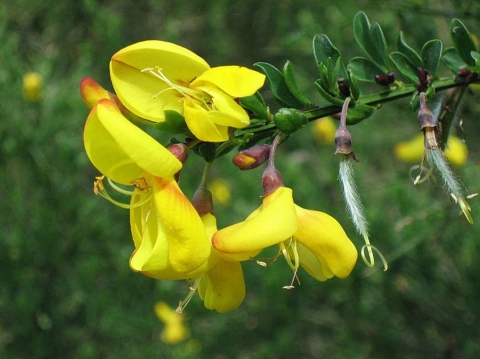
Gorse
Latin name:
Cytisus striatus
Description:
It is a native legume of Portugal.
Use:
The branches are traditionally used to make brooms. For this reason it is known in English as Portuguese Broom.
It is widely used in composting manure and to "make the bed" of animals, and it was also used to prevent erosion and improve soil fertility.
In North Portugal there is a tradition to display a broom branch on 1 May as protection against tick (identified as the devil or evil eye) -
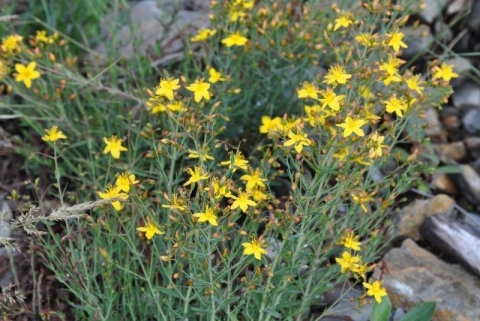
St John's wort
Latin name:
Hypericum perforatum
Description:
Also known as Erva-de-São-João
Use:
It is used as a medicinal herb since ancient Greece, because of its anti-depressant effect. However, the consumption of this plant must be moderate and monitored by a specialist since their interaction with drugs can bring harm to health.
-
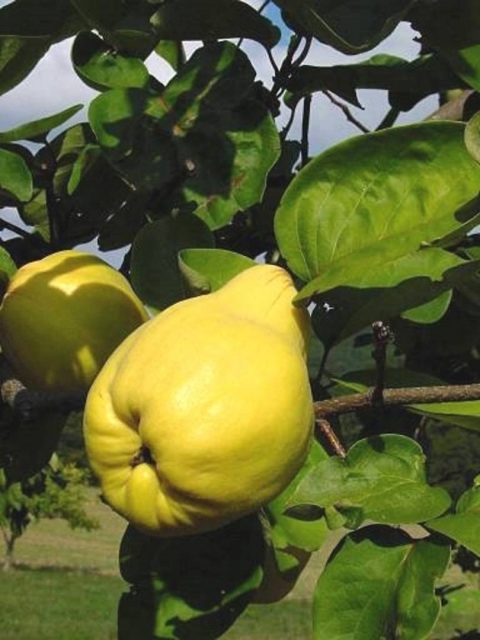
Quince
Latin name:
Cydonia oblonga
Description:
It is a small tree belonging to the family Rosaceae, the pear tree, the apple tree and the medlar tree.
Fruit:
Quince
Use:
The quince is used to make jam, jelly, liqueur and as an accompaniment to savory dishes.
The seeds and leaves have medicinal applications for its nourishing properties, astringent, antiseptic, antidiarrheal, antispasmodic and calming. -
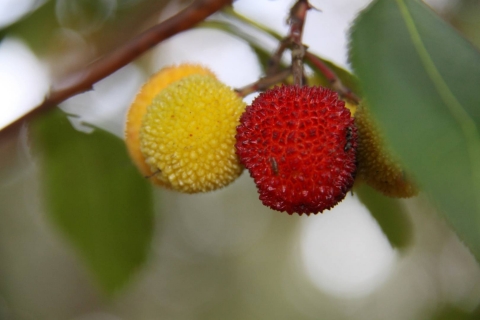
Arbutus
Latin name:
Arbutus unedo
Description:
It is a native plant in Mediterranean and Western Europe region.
Fruit:
Arbutus
Use:
The arbutus is reputed to get people drunk and it’s used primarily for making liqueurs and spirits.
The leaves and the older bark trunk contains useful tannins in the tanning industry.
In folk medicine it was used as an astringent, diuretic and as an antiseptic urinary tract. -
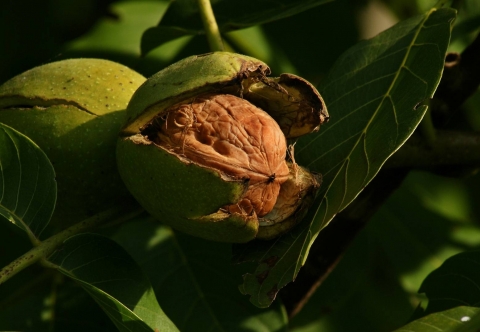
Walnut
Latin name:
Juglans regia L.
Description:
Its origins come from Southeast Asia and the Eastern Mediterranean and it was introduced to Europe by the Romans.
Fruit:
Walnut wrongly called fruit is actually the seed of this plant.
Use:
It is a timber used mainly in the manufacture of furniture and in the inner lining of the housing and it’s also much used for carving work and breeches of firearms.
The nuts are much appreciated in cooking and are well known for its detoxifying and purifying action of the blood, as well as act in lowering bad cholesterol levels and stimulate brain activity.
The leaves of walnut may be useful in treating cysts, fibroids and endometriosis, as well as helping to combat infections and inflammation of the stomach and intestines.
It is recommended a minimum consumption of 20 grams of nuts a day. -
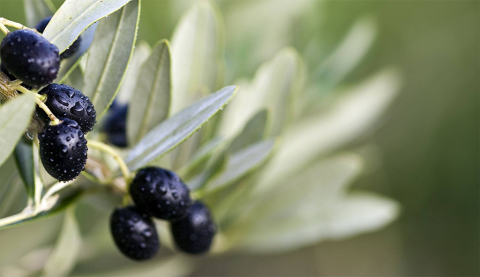
Olive tree
Latin name:
Olea europaea L.
Description:
They are native from the eastern part of the Mediterranean Sea and the northern current Iran at the southern end of the Caspian Sea.
Fruit:
Olive
Use:
The wood is hard and compact, with very fine grain. It’s a substance widely used in woodworking and carving, serving also as fuel for fireplaces.
The main product of the olive tree is the olive that is commonly consumed whole or used for extraction of the oil.
Olive oil is an excellent product in the Mediterranean diet, with various applications: medical use, such as cosmetic and relaxing. -
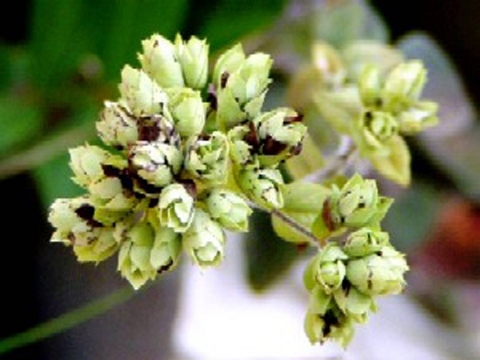
Oregano
Latin name:
Origanum vulgare
Description:
It is an aromatic herb that blooms in June lasting until autumn.
Use:
Widely used in the Mediterranean diet
Regulates the amount of glucose in the blood being used as an antidiabetic. It is an immunostimulatory and antiviral activity, increase the resistance against influenza viruses, it’s also useful in cough and hoarseness. -
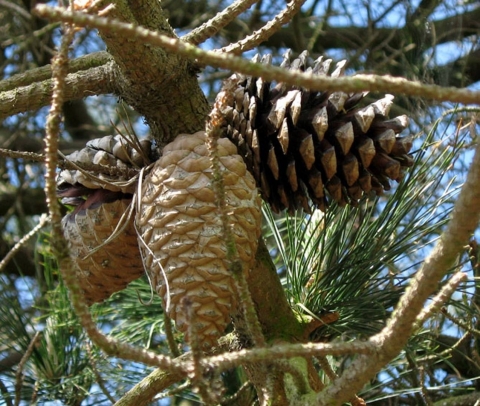
Pinaster
Latin name:
Pinus pinaster
Description:
It is a large tree, reaching 30 to 40 feet high, being native to the Southwest of Europe and North Africa.
Fruit:
The cones are the fruit of the pine, but only the seed is edible - the sprocket.
Use:
Wood is durable, heavy and unwieldy, used to manufacture furniture, poles, shuttering, crates, pellets, carpentry, shipbuilding and fuel.
The bark of the trunk is rich in tannins and it is used in tanning.
The released resin is collected for use in paint industries, varnish, turpentine and cellulose (wood pulp).
Due to its characteristics, this tree has been widely planted in order to halt the progress and the degradation of the dunes as well as for the protection of agricultural land of sand carried by the wind. An example of this use is the Pinhal de Leiria, where often also notes the extraction of resin.
Although edible and tasty, the pinion pine is not economically exploited by their small size. -
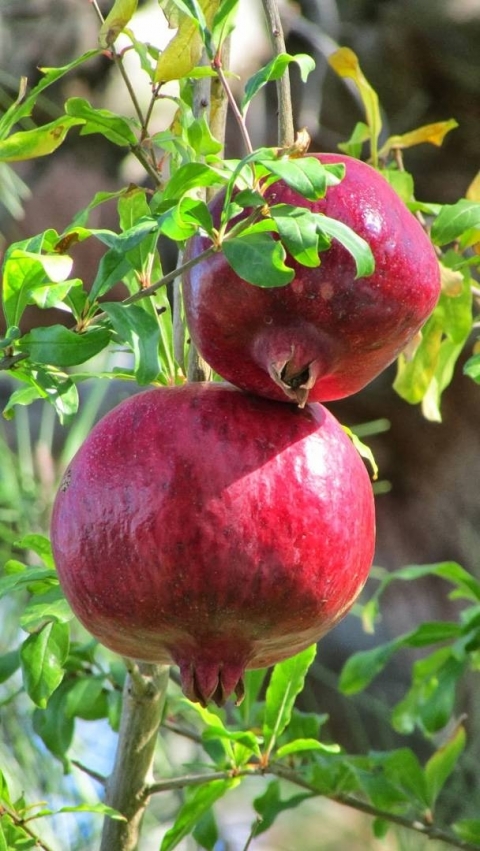
Pomegranate
Latin name:
Punica granatum
Description:
It is a small tree that reaches between 2-5 meters.
Fruit:
Pomegranate
Use:
The pomegranate is known for its antioxidant properties that make this fruit a powerful shield against cancer and other diseases, and it’s also known in Eastern cultures to increase longevity.
-
Elderberry
Latin name:
Sambucus nigra
Description:
It is a shrub that reaches up to 11-14 meters high. It is native to Europe and North Africa and is distributed throughout the world.
Fruit:
Elderberry
Use:
Elderberries are edible, used for medicinal purposes and coloring. They are used to darken the port and are livelihood of the population in Resende (Douro), exporting the berries for making medicines.
The leaf elderberry is good for influenza, cough and measles mumps, however must be used very carefully since it contains an glycoside which when processed by metabolism leads to cyanide. -
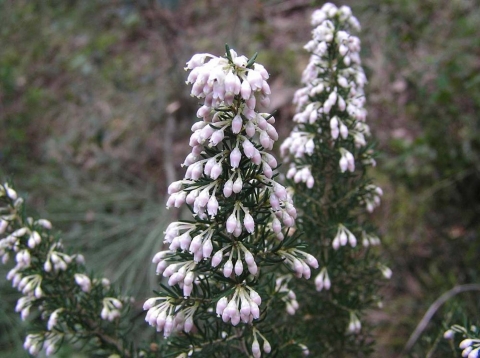
Heather
Latin name:
Erica lusitanica Rudolphi
Description:
Flowers in winter until spring, when it begins the ripening of fruits.
Use:
In the past, heather branches were used to make brooms and roots to make charcoal. It was an important source of income for families in the region.
You have medicinal applications because of its antioxidant properties, photoprotective, anti-inflammatory, regenerative and protective skin and hair.

